Split is located on a peninsula on the eastern shore of the Adriatic Sea. It is one of Croatia’s oldest cities and the second-largest city in the country after the capital, Zagreb. The city’s name evolved from the Greek Spalatum to Roman to Venetian and to Slavic before the Habsburg Monarchy settled on Split. The easy version of this evolution is the legend that says the city is named after a local flower. The picture below was our view of Split from the ship.

The dominant structure of Split is Diocletian’s Palace, built at the end of the third century as a retirement haven for the emperor Diocletian. It also included housing for a military garrison. It is the best-preserved palace from the late Roman antiquity and has become the Old Town of Split.
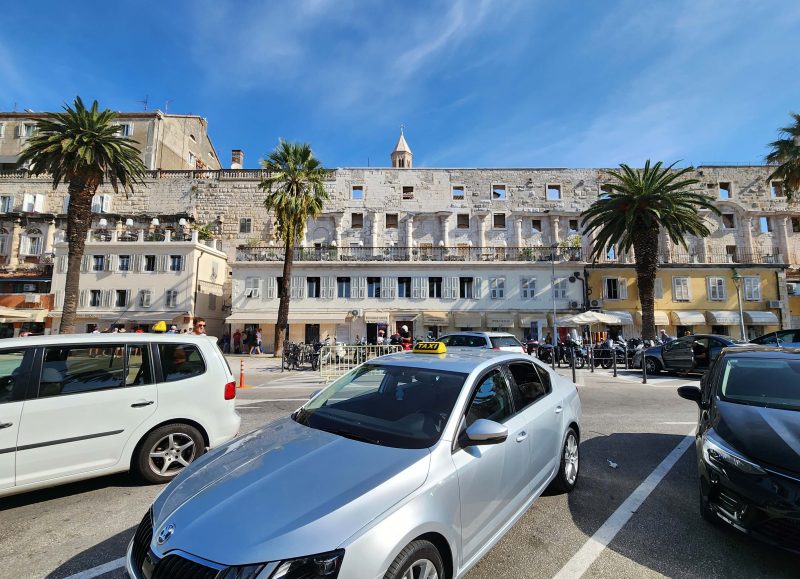
A statue of Marko Marulic stands beside the Central Palace Tower. Marulic was the national poet of Croatia as well as a lawyer and a judge. He lived in the 15th century and coined the term psychology. He was one of the most dynamic and influential theological and devotional writers of the Renaissance–and yet, even as an undergraduate English major with a master’s degree in English, I’ve never heard of him. Is he weeping because of my ignorance?
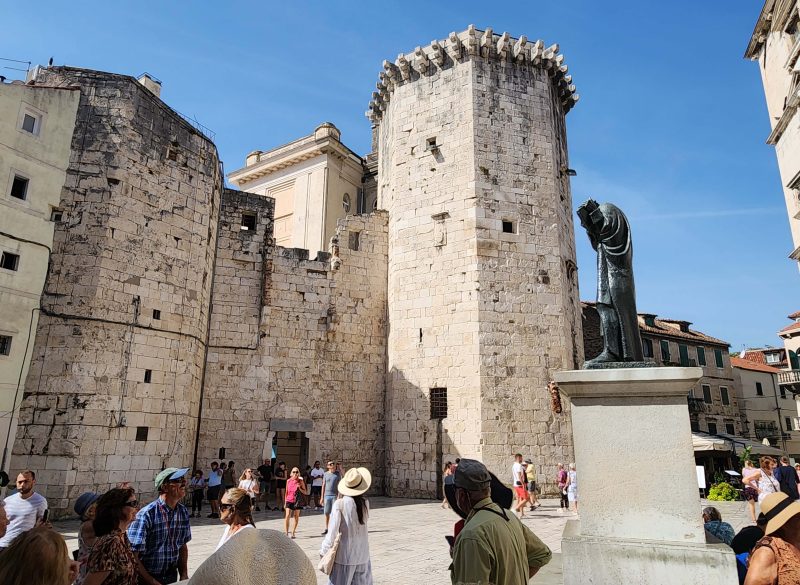
Diocletian’s Palace had four gates. The gates themselves did not survive, but the stone pillars and arches can still be seen. The Golden Gate on the north side of the palace was pretty in the afternoon light.

Split city life is interwined with life at the palace. For example, the Ethnographic Museum is inside the palace and the ancient basement hallways are lined with shops. There are many empty rooms in the palace that are used for local events. During our visit, several of the rooms featured an unusual art exhibit.

The cellars of Diocletian’s Palace are sometimes called the basement halls. Because it is situated on a hillside, the cellars were built to level the palace and to elevate the emperor’s apartments above them. The cellars were used for food and wine storage and gave the emperor access to the palace without having to disembark his ship. Here’s a picture of one of the basement halls.
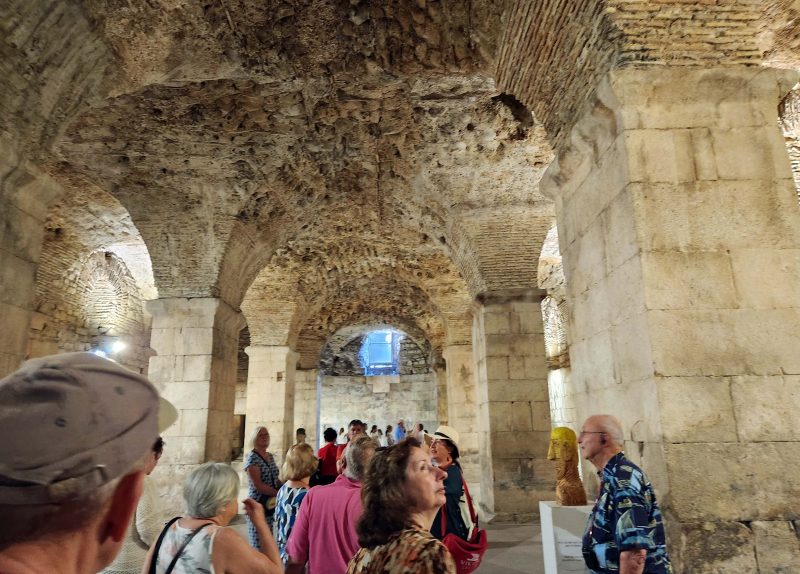
The palace cellars have a labyrinth of secret corridors called the lost tunnels. The long, horizontal log-like object in this tunnel was another of the unusual pieces from the current art exhibit.
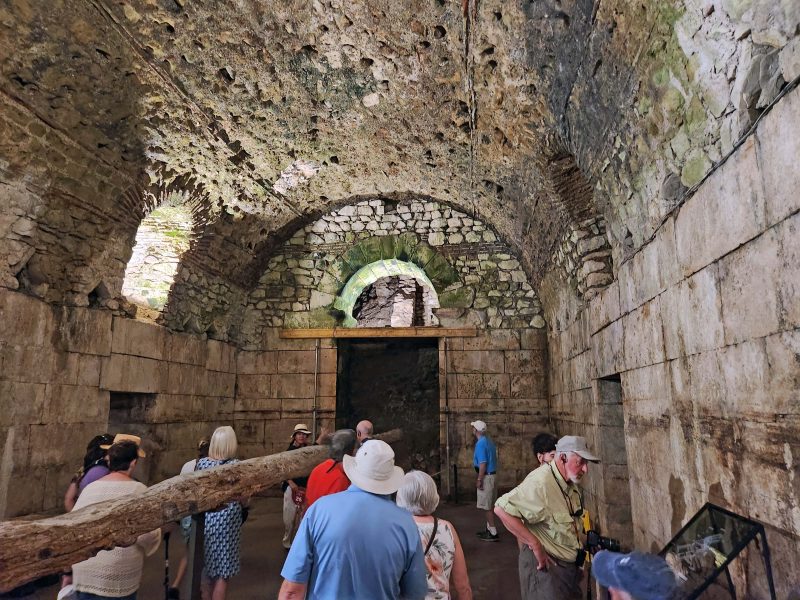
One of the basement rooms had a circular, slightly domed ceiling.
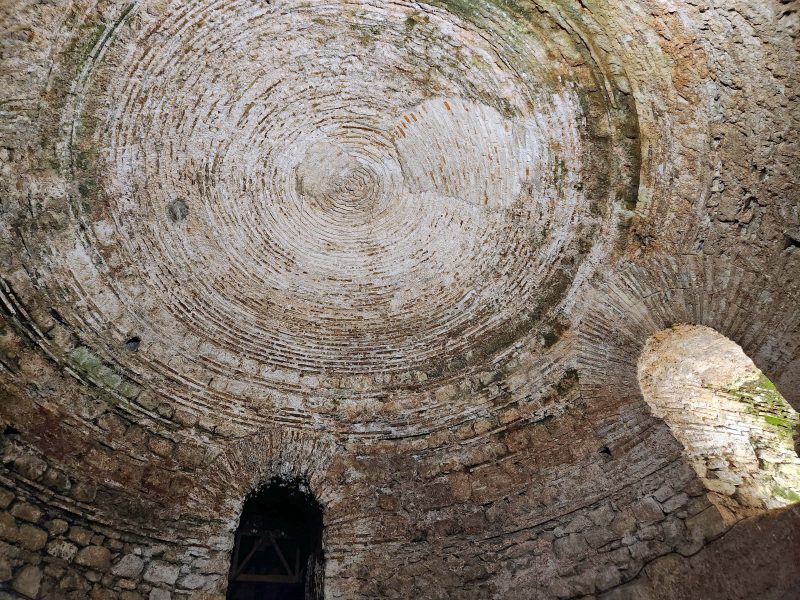
The room pictured below is called the Palace Vestibule or the Rotonda or the Atrium—take your pick. It was once the formal entrance to the imperial apartments. The acoustics in the room are wonderful, so people like to go there to sing. In the summer months, klapa groups perform folk songs, taking advantage of the acoustics to present a cappella performances.
A klapa group has a first tenor, a baritone, and a bass singer. Voices can be doubled, up to a dozen male singers. Sometimes there are female groups, but the male and female groups do not generally perform together. We were here in September, so I guess it didn’t count as summer because this klapa group sang “Nearer My God to Thee” which is hardly a folk song. Whenever I hear that hymn, I can’t help thinking about the band playing that song while the Titanic sank—probably not the klapa group’s intended reaction.
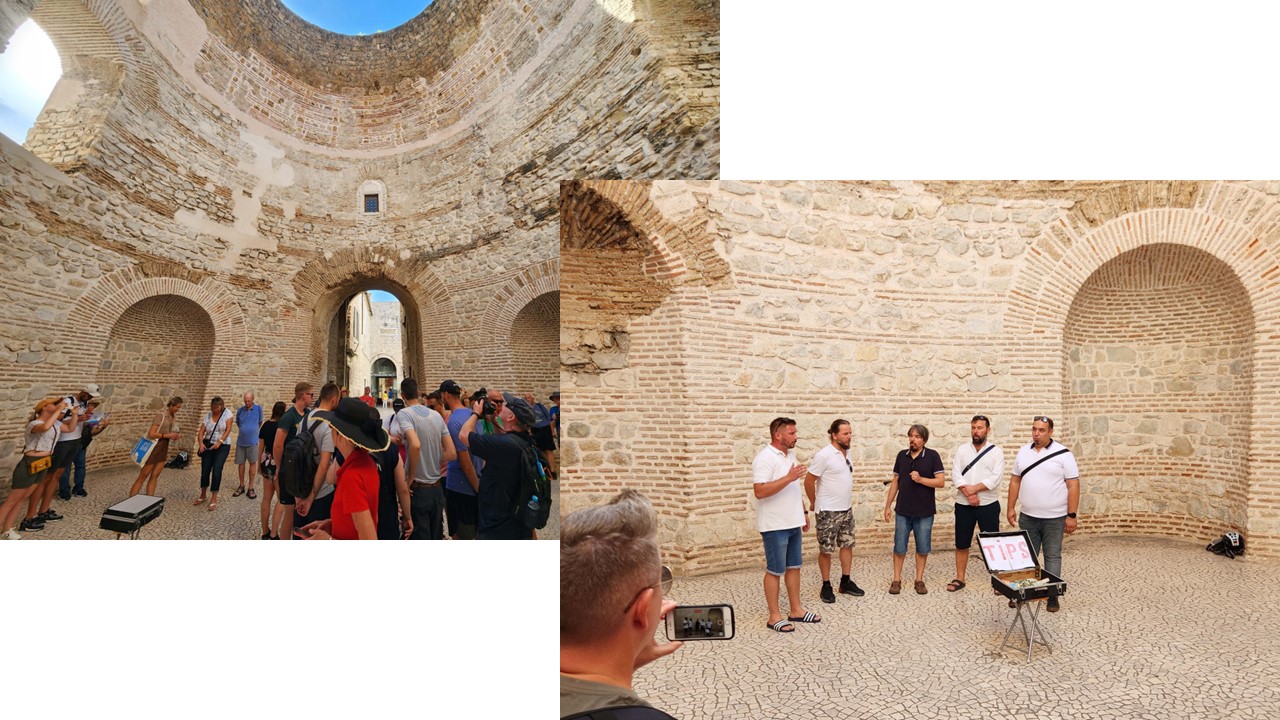
We left the palace, aka the Old Town, through this gate in the palace wall.
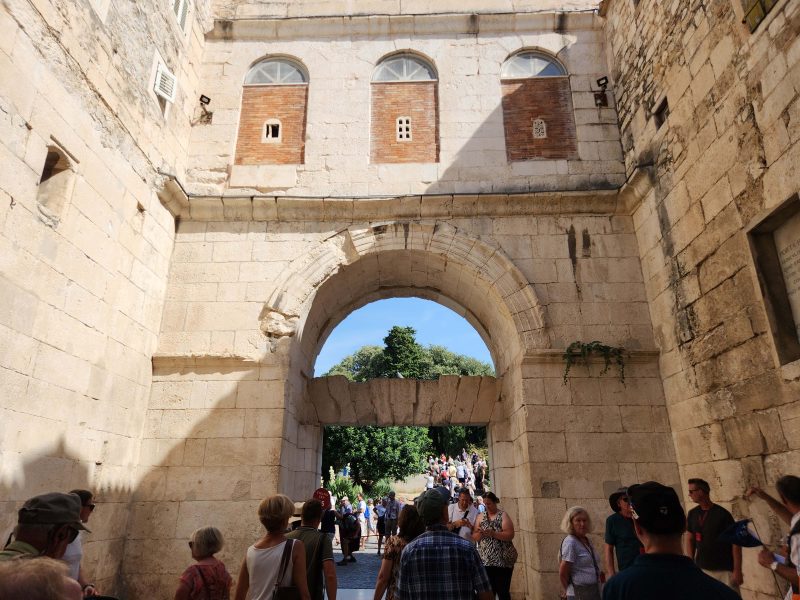
People still live in the Old Town of Split but the palace, which includes the entire Old Town, is a UNESCO World Heritage Site like Dubrovnik. That means, just like Dubrovnik, it’s mostly Airbnbs and it’s hard to renovate or to sell a building because of the preservation regulations.
Just outside the palace is People’s Square, the heart of Split. It was originally named Saint Lawrence’s Square in the 13th century, but no one calls it that. This was the first inhabited part of the city outside the palace and is still the center of public life in Split, with bars, restaurants, and shops.
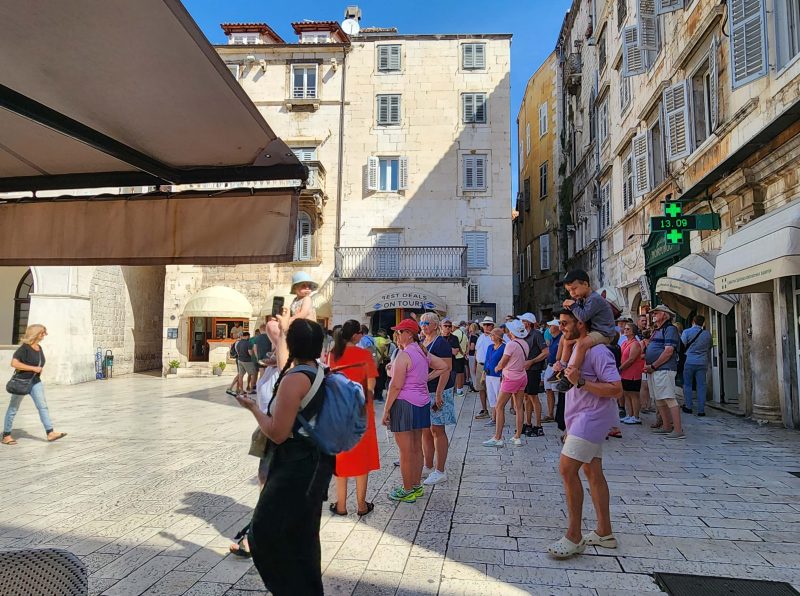
The city clock on the bell tower in People’s Square has been keeping time for centuries. It has an unusual face with 24 hourly markings, rather than twelve. The hours are inscribed in Roman numerals. Hour 12 is at the top and hour 24 is at the bottom where we are accustomed to seeing hour 6. The black arm with the indicator at the end tells the time—almost noon.
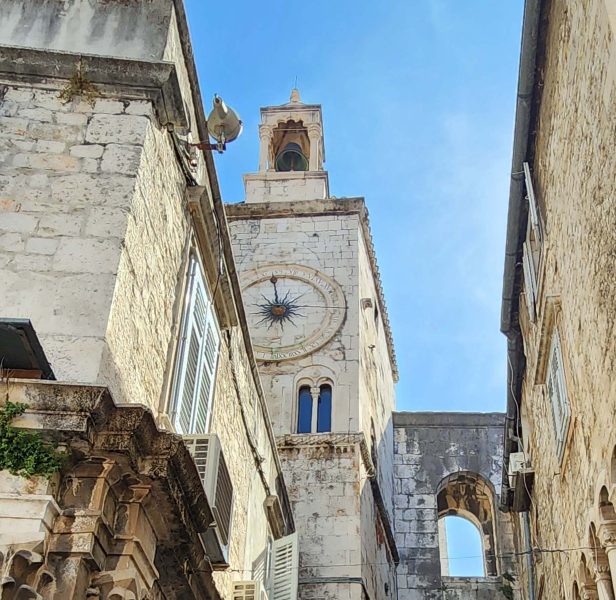
The St. Arnir Bell tower near the Golden Gate was once part of a Benedictine monastery at this site, but the monastery was destroyed by fire in 1945 and only the chapel and the bell tower survived. I think it makes a pretty picture against the blue sky.
